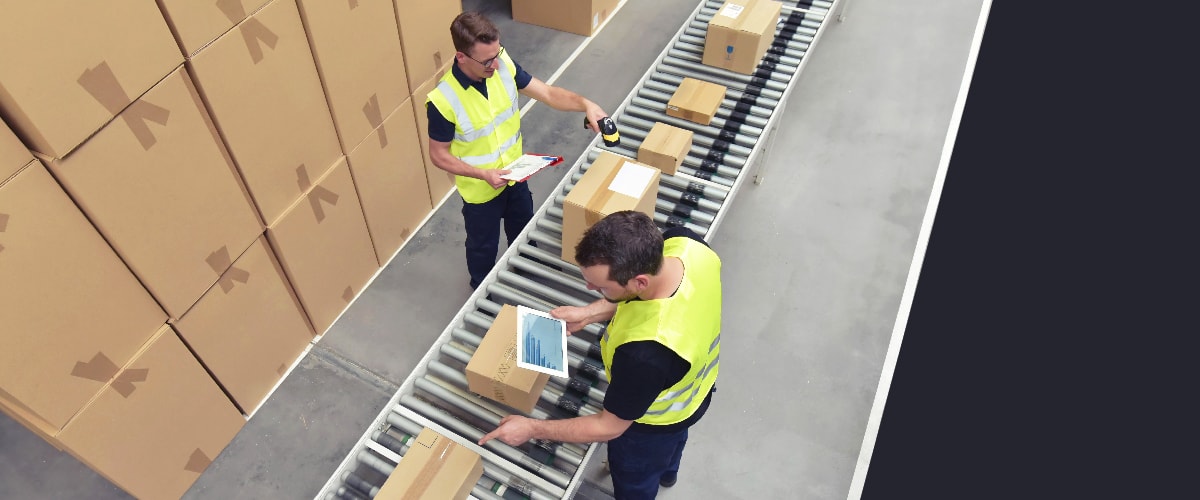 Web Content Viewer
Web Content Viewer
Technology Investments Allow Business to Offset the Impact of Tariffs without Relocating Production

After many months of high-tension negotiations between the U.S. and China, phase one of a long-awaited trade deal has been signed. While the deal includes $78 billion in additional manufacturing purchases from China, combined with China’s recent decision to reduce tariffs on $75 billion in U.S. goods, many have concerns about the trade war’s lasting impact, leaving some manufacturing companies in China to consider shifting operations to other offshore locations. But is the relocation of production centers the right move for your business?
Shifting production to an alternative location can be a costly and risky proposition in response to a fluctuating situation. However, investing in technology can offer a better option than relocation. Instead of gambling on a new location for offshore production, savvy brands are using technology to reduce operating costs and offset the impact of tariffs on their companies’ bottom lines.
Tariffs and the global supply chain
Using the auto industry as an example, if Chinese tariffs only applied to finished vehicles, their impact on the auto industry would be negligible. China sold 51,062 finished passenger vehicles to the U.S. in 2018 at a total value of $1.3 billion a mere 0.6% of total imports by volume.
Future tariffs on finished vehicles could be more significant, especially if those tariffs are imposed on vehicles from the EU and Japan. The Alliance of Automobile Manufacturers predicts that a 25% tariff on imported passenger vehicles (primarily from Japan and the EU) could cost U.S. consumers $45 billion or $5,800 per year based on 2017 sales.
But for now, the auto industry is primarily feeling the sting of tariffs in automotive parts. In 2017, Chinese-supplied vehicle parts accounted for 12% of all imports, making China the second largest supplier of vehicle parts to the U.S. after Mexico, and this applies to many other industries and products.
On the surface, shuffling offshore production locations sounds very promising, but when you dig a little deeper, the actual costs of relocating overseas production rise to the surface.
- Cost & complexity — offshore relocations elevate risk because they’re expensive and complex.
- Infrastructure — many emerging economies lack the same capabilities and infrastructure as China, limiting their potential as production centers.
- Uncertainty — the administration’s trade policy decisions are fluid. For example, the administration recently reversed course on certain tariffs due to holiday shopping concerns.
In today’s economy, trade policy is a game of musical chairs — tariffs can appear and disappear in the blink of an eye. You have to either absorb some of the tariff increase and reduce costs to offset the 25% increase on parts or finished products.
Technology offsets the cost of tariffs in manufacturing
Technology creates opportunities to close the financial gap tariffs create through improved efficiency and cost savings. Unlike an offshore relocation, technology improvements can be achieved somewhat easier and deliver benefits that continue long after tariffs disappear.
Although there are many opportunities to use technology to your advantage, there are several ways you can use technology solutions to achieve the most value in a short period of time.
Use ERP to manage excess inventory.
Excess inventory is a financial drag on your operations while a just-in-time inventory model allows you to stock only what you need, when you need it. By either implementing an Enterprise Resource Planning (ERP) software solution or upgrading your existing one, you can reduce operating costs by ensuring you stock the right products in the right quantities at the right times. An ERP solution can further improve efficiency through smart purchasing features, warehouse management tools, analytics, and direct international shipping capabilities to minimize tariff impacts by only shipping what is sold into tariff countries.
Automate more processes.
A tariff-saturated trade market provides even more of an opportunity to automate additional warehouse, supply chain, and production processes. From barcode scanning and RF tag readers to automated conveyor systems and robotics, enhanced automation can quickly close the financial operating gap created by tariffs and uncertain trade policies.
Migrate software and data to the cloud.
With evolved security and reliable computing environment, now is the time to move to the cloud. Rather than pouring dollars into servers and the IT staff it takes to maintain them, migrate software and data to the cloud to permanently reduce costs. The implementation of a cloud-based ERP offers a logical starting point because it taps into the efficiencies of both inventory management and cloud computing.
Leverage IoT.
The Internet of Things (IoT) connects machines and systems in manufacturing and transportation, creating opportunities for improved efficiencies and cost savings. For example, by installing IoT sensors on machines, machine components, and freight, you can capture information in real-time, perform predictive maintenance on equipment, and analyze output — activities that ultimately result in bottom-line business improvement and cost savings
As tariffs continue to increase, companies needs to look inward to optimize business processes and free up resources to focus on growing the business. Investing in an ERP solution is the perfect first step in making this change.
Joe Scioscia
Vice President of Sales
Vice President of Sales
Comments
By using this site you agree to our Privacy Policy and our Terms of Use.
120 Comac Street
Ronkonkoma, NY 11779
Ronkonkoma, NY 11779
 | Vormittag Associates, Inc. ©2025 |
| Vormittag Associates, Inc. ©2025 |